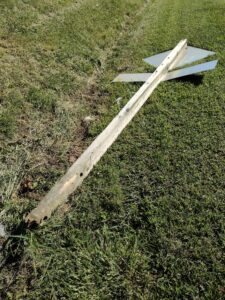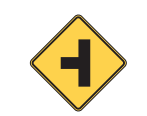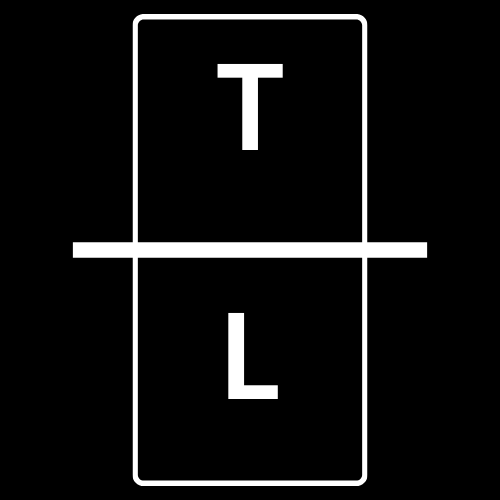29 Sep Where’s My Sign?
You know that magic moment when you think you’re just going to read about a guy picking up trash, but you also get a lesson in street planning (with some solid acronyms as a bonus)? If you’ve never had the experience, get ready, because here it comes.

I frequently reference this sign when I run near my home. Depending on the route I choose, this sign marks the perfect turn around point for 3 or 4 mile runs, as well as the classic 5K. Up until now, it’s always been there for me, a reflective yellow beacon telling me that it’s time to make my way home.
You can imagine my consternation at finding it lying unceremoniously in the grass. I assume it was knocked down by one of the Washington County Public School (WCPS) system’s behemoth mowers, though it could also have been a victim of the Maryland Department of Transportation (MDOT) mower crew. These acronymous organizations have truly large mowers, some with remote controls, others with air conditioning. What an age we live in.
As I stood over the fallen traffic guide, I wondered who would fix my favorite mileage marker. Beyond that, who decided the sign belongs here in the first place?
USDOT – More than Road Repair
Well, the US Department of Transportation (USDOT) has a document called the Manual on Uniform Traffic Control Devices (MUTCD) that answers those questions and more. There’s a website dedicated to the document, and if you care to look at it, the excitement is contagious. Given the subject matter, someone on that site design team put on a real clinic in drumming up appreciation for what they do. I pulled the following quotes directly from the site:
“We share in your enthusiasm for a new MUTCD and it remains a top priority for the USDOT.”
“Check out the MUTCD News Feed for up-to-the-minute information…everything you need to make the most of your MUTCD and keep road users on the move!”
Now that we’re hyped for what’s to come, let’s check out some philosophical thoughts on the MUTCD from a paragraph further down the page…
“Whenever you see an easy-to-read sign, a bright edgeline marking on a foggy night, the countdown timer at a crosswalk, or a well-placed bike lane, take a moment to reflect on the more than eighty years of progress and innovation that the MUTCD embodies.”
“Over the years, the MUTCD has unknowingly become the traveler’s best friend and silent companion, guiding us on our way along the streets, bikeways, back roads, and highways.”
“As the direct means of communication with the traveler, traffic control devices speak to us softly, yet effectively and authoritatively. From glass “cat’s-eye” reflectors to glass beads to microprismatic sheeting, nighttime sign visibility has advanced significantly.”
Well, now you’ve got my attention…
I don’t know about you, but reading about edgelines on foggy nights and microprismatic sheeting gets me in the mood to appreciate some signage – especially when it whispers to me softly, yet effectively. This document really (REALLY) moved someone down at the USDOT, so much that they ignored the social stop sign of convention and got poetic on a government website. You don’t get this kind of verbiage on the IRS’s site. Not since another politician, King David of ancient Israel, rattled off 176 verses declaring his love for Levitical law has such a looming list of rules and guidelines been given such tender treatment.
As a reader, I enjoy poetry (to a degree), so of course I was ready to have a look at the MUTCD. Who wouldn’t want to be swept off their feet after the glowing praise above? With barely contained excitement, I opened the PDF document containing the embodiment of every good idea anyone has ever had concerning highway signs.
Holy cow, this thing is comprehensive (have a look if you dare…) It’s a hefty 864-page PDF document. Yeah, it’s a growing document approaching 1000 pages. In terms of epic scope, this document stands shoulder to shoulder with classics like War and Peace, The Count of Monte Cristo, and Gone with the Wind. I don’t mean to put too fine a point on the size of this thing, but the table of contents is 28 pages long.
They put everything in here.
There are pages full of tables dictating how big a sign should be based on speed limit, number of lanes, direction of traffic, whether the installer is left-handed, and if the surrounding grass is Bluegrass or Bermuda. If there’s a potential intersection, the MUDCT has a diagram of it under normal and construction conditions. And don’t even start reading about sign spacing unless you’re ready to know everything…
Given the enormous scope of traffic situations the MUDCT deals with, I thought it might be helpful to zero in on the sign that started this conversation.

It’s a W2-2 intersection sign that’s classified as a “bold sign” that “depicts the condition where an intersection occurs within or immediately adjacent to a turn or curve.” The MUDCT states that this kind of sign is to be placed 250 ft before the intersection and at a 93 degree angle away from the driver.
I could go on, but I think I’ve made my point. If you want more of this scintillating info, you’re going to have to check it out yourself.
Clearly, the MDUCT is a document that obviously deserves more love than it’s given. I don’t know why we don’t sell commemorative copies at the holidays or recite passages before sporting events. As the website reminds us so poignantly, the MDUCT is a document for all of us, and one that should be treasured, especially as it’s the guiding document that will get my sign repaired so I know how far I’m supposed to run next time I lace up and hit the road.

No Comments